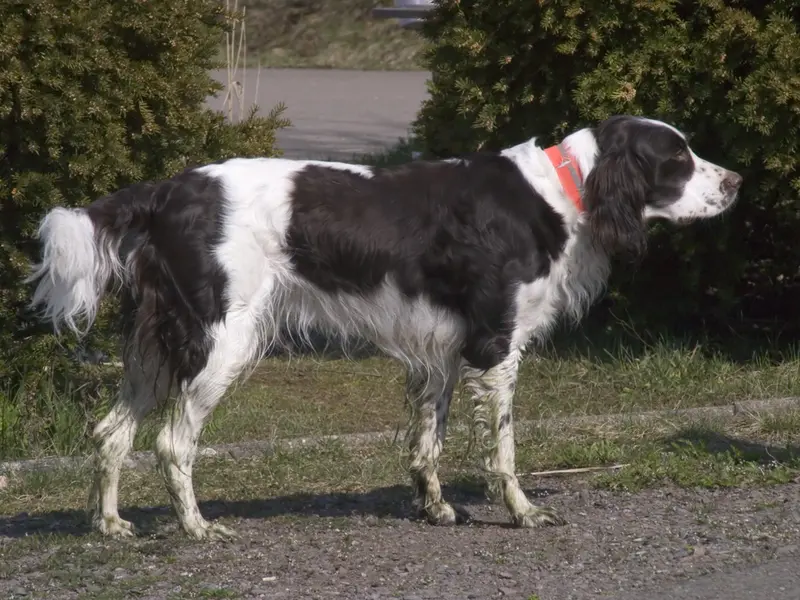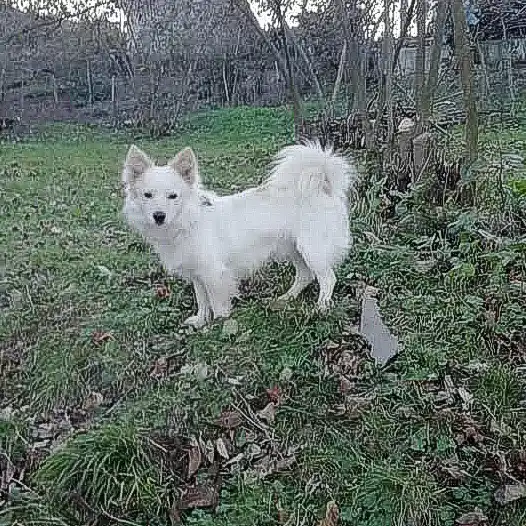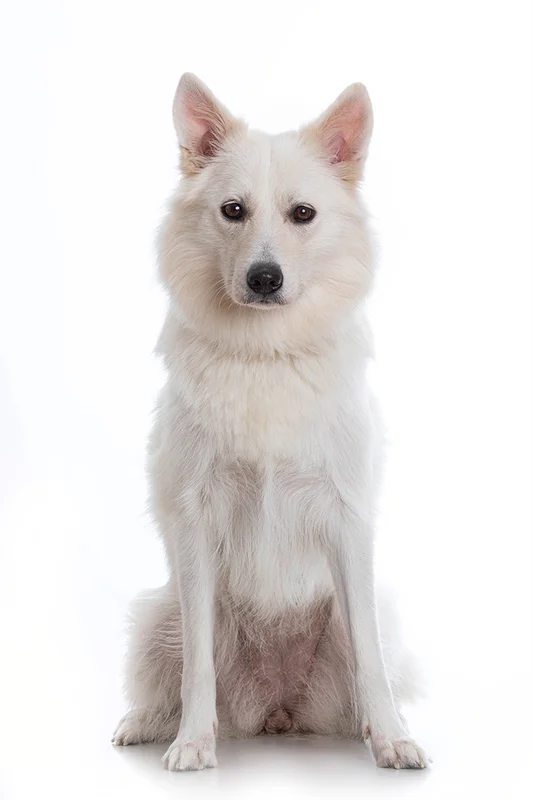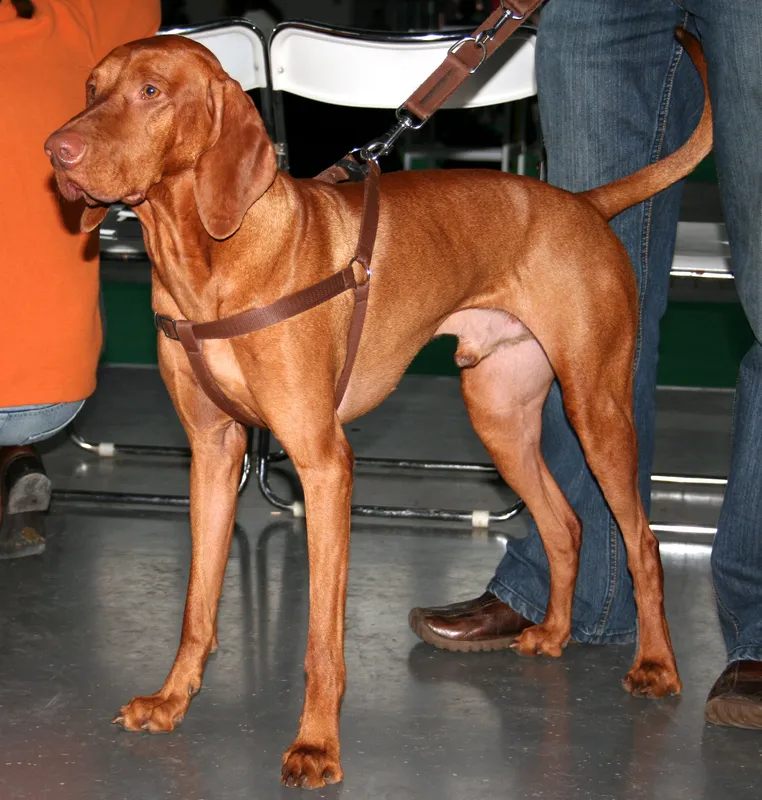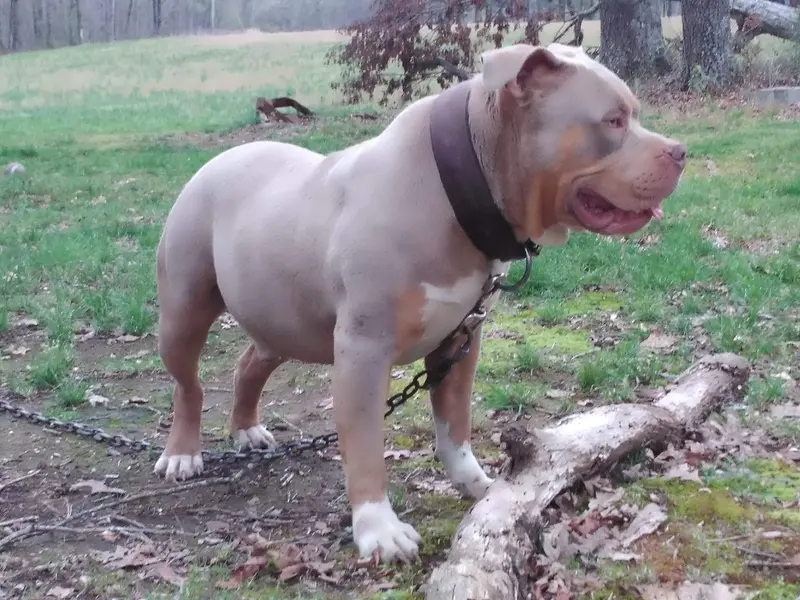Boykin Spaniel
The Boykin Spaniel is a medium-sized, friendly sporting dog known for its versatility in hunting and as a loving family companion. With a rich history in South Carolina, they excel in flushing and retrieving game, making them ideal for active families.
Overview
🐕Breed Overview
✨Key Traits
💡What Makes Boykin Spaniel Special
The Boykin Spaniel is characterized by its versatility as both a hunting dog and a family companion. Their strong work ethic and eagerness to please make them exceptional partners in the field, whether flushing birds or retrieving game.
They are known for their stamina and agility, allowing them to excel in various hunting environments. At home, they are affectionate and loyal, often forming strong attachments to their families.
Their playful nature and intelligence make them engaging companions, and they thrive on mental stimulation and physical activity. Boykin Spaniels are also known for their friendly demeanor, making them excellent family pets that enjoy the company of children and other animals.
The Boykin Spaniel is a medium-sized sporting dog that originated in the wetlands of South Carolina. Known for its friendly disposition and versatility, this breed was developed in the early 1900s as a compact hunting companion capable of flushing and retrieving game. With a height ranging from 14 to 18 inches and a weight between 25 to 40 pounds, Boykin Spaniels are agile and well-suited for various hunting environments.
Their solid liver or chocolate-colored coats are water-resistant, making them ideal for waterfowl hunting. This breed is characterized by its affectionate nature, making it an excellent family pet. Boykin Spaniels are known for their high energy levels and require regular exercise, including walks, swimming, and playtime.
They are intelligent and eager to please, which makes training relatively easy. Their friendly demeanor allows them to get along well with children and other pets, although early socialization is essential. With an average lifespan of 14 to 16 years, Boykin Spaniels are a long-term commitment that brings joy and companionship to any household.
Whether in the field or at home, these dogs are known for their loyalty and love for their families, making them a cherished addition to any home.
🎉Fun Facts
Boykin Spaniels are excellent swimmers and often enjoy water activities, making them ideal for families who love outdoor adventures.
Boykin Spaniels are known as 'the dog that doesn't rock the boat' due to their compact size and calm demeanor in boats.
They were recognized as the state dog of South Carolina in 1985, reflecting their regional significance.
Breed Characteristics
Family & Friends
Good Behavior
Get Up & Go
Household Harmony
Temperament & Personality
✨Key Traits
🐕Core Temperament
The Boykin Spaniel is known for its friendly and sociable temperament. They are eager to please and enjoy being part of family activities, making them excellent companions for both adults and children.
Their playful nature and intelligence allow them to excel in training and various dog sports. While they are generally good with other dogs and pets, early socialization is important to ensure they develop positive relationships.
Boykin Spaniels are adaptable and can thrive in different living situations, but they do require regular exercise and mental stimulation to prevent boredom and maintain their well-being.
💫Personality Profile
The Boykin Spaniel is a friendly and affectionate breed, known for its eagerness to please and strong bond with its family. They are energetic and playful, thriving in active households where they can participate in outdoor activities.
Their friendly nature makes them great companions for children and other pets, and they typically get along well with strangers. Boykin Spaniels are intelligent and relatively easy to train, responding well to positive reinforcement methods.
They enjoy being involved in family activities and are known for their adaptability to various living situations, provided they receive enough exercise and social interaction.
🔊Vocal Tendencies
Boykin Spaniels are generally not excessive barkers, making them suitable for various living environments. They may bark to alert their owners of strangers or unusual sounds, but they are not known for being overly vocal.
Their barking tends to be moderate, and they are usually well-behaved indoors as long as their exercise needs are met. This breed's vocalizations are typically friendly and engaging, reflecting their sociable nature.
Affection & Social Traits
Energy & Activity
Communication Style
Care Requirements
🏃♂️Exercise Requirements
Daily Exercise
The Boykin Spaniel is a medium-small breed with a high energy level, requiring a good amount of daily exercise to stay healthy and happy. Ideally, they need at least 60 to 90 minutes of exercise each day. This can include brisk walks, jogging, playing fetch, or engaging in dog sports like agility or obedience trials.
They thrive on activities that stimulate both their physical and mental faculties, such as swimming, which they particularly enjoy due to their waterfowl hunting background. Puppies may require shorter, more frequent play sessions, while older dogs may benefit from gentler activities to accommodate their energy levels and joint health. Regular exercise helps prevent obesity, promotes cardiovascular health, and reduces behavioral issues that can arise from pent-up energy.
Insufficient exercise can lead to destructive behaviors, anxiety, and weight gain, making it crucial for owners to establish a consistent exercise routine.
Preferred Activities
🏠Living & Adaptability
Space Requirements
Boykin Spaniels are adaptable and can thrive in various living environments, from apartments to homes with large yards. However, they do require sufficient space to move around and play.
Ideally, they should have access to a secure outdoor area where they can run and explore. For apartment dwellers, regular trips to parks or open spaces are essential to meet their exercise needs.
Their medium size and friendly nature make them suitable for families, but they should not be confined for long periods, as this can lead to boredom and anxiety. Owners should ensure that their living space is dog-proofed and that they have a comfortable area to rest indoors.
Climate Preference
🍲Feeding Guide
Schedule
Food Types
Portion Size
Special Nutritional Needs
Boykin Spaniels may require a diet rich in protein to support their active lifestyle. It's important to choose high-quality dog food that meets their nutritional needs.
Some dogs may have sensitivities to certain ingredients, so monitoring their reactions to food is essential. Regular veterinary check-ups can help identify any specific dietary needs or health concerns.
✨Grooming Requirements
Grooming Overview
The Boykin Spaniel has a medium-length coat that can be flat, slightly wavy, or curly. Regular grooming is necessary to prevent matting and to keep the coat healthy.
Weekly brushing is recommended to remove loose hair and dirt, and occasional baths will help maintain cleanliness, especially after outdoor activities. The ears should be checked regularly for moisture and debris, as they are prone to ear infections.
Trimming around the feet and ears can help maintain a neat appearance, but the coat should not be shaved, as this can affect its protective qualities.
Care Schedule
Brush weekly, bathe as needed (approximately every 4-6 weeks), and check ears regularly.
Health Profile
⚕️Health Care
Regular health care is vital for the Boykin Spaniel's lifespan. Routine veterinary check-ups, vaccinations, and preventive treatments can help detect and address health issues early.
Maintaining a healthy diet, providing regular exercise, and monitoring for any changes in behavior or health are essential practices for promoting longevity. Owners should also be proactive in managing any breed-specific health concerns, such as hip dysplasia or eye problems, through regular screenings and appropriate care.
Health Issues Overview
⏳Average Lifespan
Genetic Factors
Genetics play a significant role in the Boykin Spaniel's lifespan, as certain hereditary health issues can affect their overall health and longevity. Responsible breeding practices, including health testing for common genetic conditions, are essential to reduce the risk of inherited diseases.
Potential owners should seek breeders who conduct health screenings and prioritize genetic diversity to ensure healthier puppies. Understanding the genetic background of a dog can help owners make informed decisions about their care and potential health issues.
Living Conditions
The Boykin Spaniel's lifespan can be influenced by various environmental factors, including housing conditions, climate, and social interactions. Dogs that live in active households with ample opportunities for exercise and socialization tend to live longer, healthier lives.
A well-ventilated and comfortable living space, along with regular outdoor activities, can significantly contribute to their overall well-being. Additionally, exposure to extreme temperatures should be managed, as Boykin Spaniels are adaptable but can be sensitive to extreme heat or cold.
Regular veterinary care and a balanced diet also play crucial roles in promoting longevity.
🏥Common Health Issues
Hip Dysplasia
Warning Signs
🔬Diagnosis
X-rays or physical examination by a veterinarian.
💊Treatment
Weight management, pain relief medications, and in severe cases, surgical intervention.
📝Management Tips
Maintain a healthy weight, provide joint supplements, and avoid excessive strain on joints.
Patellar Luxation
Warning Signs
🔬Diagnosis
Physical examination and X-rays.
💊Treatment
Surgery to stabilize the knee joint.
📝Management Tips
Weight management and physical therapy can help; surgical options may be necessary for severe cases.
Cataracts
Warning Signs
🔬Diagnosis
Veterinary eye examination.
💊Treatment
Surgical removal of cataracts may be necessary.
📝Management Tips
Regular eye check-ups and monitoring for changes in vision.
🛡️Preventive Care
🔬Hip Evaluation
Evaluates the hip joints for dysplasia and other abnormalities, essential for breeding decisions.
📅 At least once before breeding, and annually for older dogs.
🔬Patellar Luxation Evaluation
Assesses the knee joints for luxation, important for maintaining joint health.
📅 At least once before breeding, and annually for older dogs.
🔬Ophthalmic Examination
Checks for hereditary eye diseases, crucial for maintaining vision health in the breed.
📅 Annually, especially for breeding dogs.
Training
🧠Intelligence & Trainability
💪Work Drive
Boykin Spaniels have a strong work drive, stemming from their history as hunting dogs. They thrive when given tasks or jobs to do, whether it's retrieving game, participating in agility trials, or engaging in obedience training.
Mental stimulation is just as important as physical exercise for this breed. Puzzle toys, scent work, and interactive games can help satisfy their need for mental engagement.
Without sufficient stimulation, they may become bored and exhibit undesirable behaviors. Owners should aim to provide a variety of activities that challenge both their physical and mental capabilities.
⚠️Training Considerations
While generally easy to train, Boykin Spaniels can exhibit stubbornness if not properly motivated. They thrive on positive reinforcement and consistent training methods.
Common challenges may include distractions during training sessions, especially if they are excited or in a stimulating environment. To overcome these challenges, owners should establish a structured training routine, use high-value rewards, and keep training sessions short and engaging.
Socialization is also crucial to prevent any potential behavioral issues, as they can be overly friendly and may not recognize boundaries with other dogs or pets.
📝Training Tips
Boykin Spaniels respond well to positive reinforcement techniques, making training a rewarding experience for both the dog and the owner. Start with basic commands such as sit, stay, and come, gradually introducing more complex tasks.
Consistency is key; practice commands regularly and incorporate them into daily routines. Socialization with other dogs and people from a young age is essential to develop their friendly nature and prevent any behavioral issues.
Engaging in activities like agility training or obedience trials can also keep them mentally stimulated and strengthen the bond between the dog and owner. Owners should be patient and understanding, as Boykin Spaniels may retain playful behaviors throughout their lives, requiring ongoing training and engagement.
History & Heritage
📜Origin Story
The Boykin Spaniel's story begins in the early 1900s in South Carolina, where hunters needed a compact and efficient dog for waterfowl hunting. W. 'Whit' Boykin discovered a small stray spaniel named Dumpy, who excelled in retrieving and flushing game.
Recognizing Dumpy's potential, Boykin began breeding him with other spaniels and retrievers to enhance his hunting abilities. The result was a medium-sized, robust dog that could navigate the challenging terrain of the swamps and fit comfortably in small boats. The breed quickly gained a reputation for its versatility and friendly nature, becoming a favorite among hunters and families.
As the breed spread beyond South Carolina, it became recognized for its unique qualities and contributions to hunting, leading to its eventual designation as the state dog of South Carolina.
⏳Development History
W. 'Whit' Boykin and his family in South Carolina.
They sought to create a small, agile dog that could fit into the section boats used for hunting in the Wateree River swamp. The breed's foundation began with a small brown stray spaniel named Dumpy, who displayed remarkable hunting abilities.
Through selective breeding, including crosses with the Chesapeake Bay Retriever, Springer Spaniel, Cocker Spaniel, and American Water Spaniel, the Boykin Spaniel emerged as a versatile hunting dog. Over the years, they gained popularity among hunters and families alike, leading to the establishment of the Boykin Spaniel Society in 1977 and their recognition by the AKC in 2009.
🛡️Purpose & Historical Role
Originally bred for flushing and retrieving game, the Boykin Spaniel has evolved into a versatile hunting companion. They are particularly skilled in waterfowl hunting, where their compact size and agility allow them to excel in retrieving tasks.
Additionally, they are known for their stamina and ability to work in various terrains, making them suitable for upland game hunting as well. Beyond their hunting capabilities, Boykin Spaniels have become cherished family pets, known for their affectionate nature and adaptability to family life.
🏺Cultural Significance
The Boykin Spaniel holds a special place in South Carolina's culture, being recognized as the state dog since 1985. This breed was developed by hunters in the Wateree River swamp area, where they were bred for their exceptional abilities in flushing and retrieving game.
Their friendly demeanor and versatility have made them popular not only as hunting companions but also as family pets. The breed's unique history and contributions to hunting in the southeastern United States have solidified their status as a beloved regional treasure.
Conservation Status
This breed is less common but has stable populations in certain regions.
